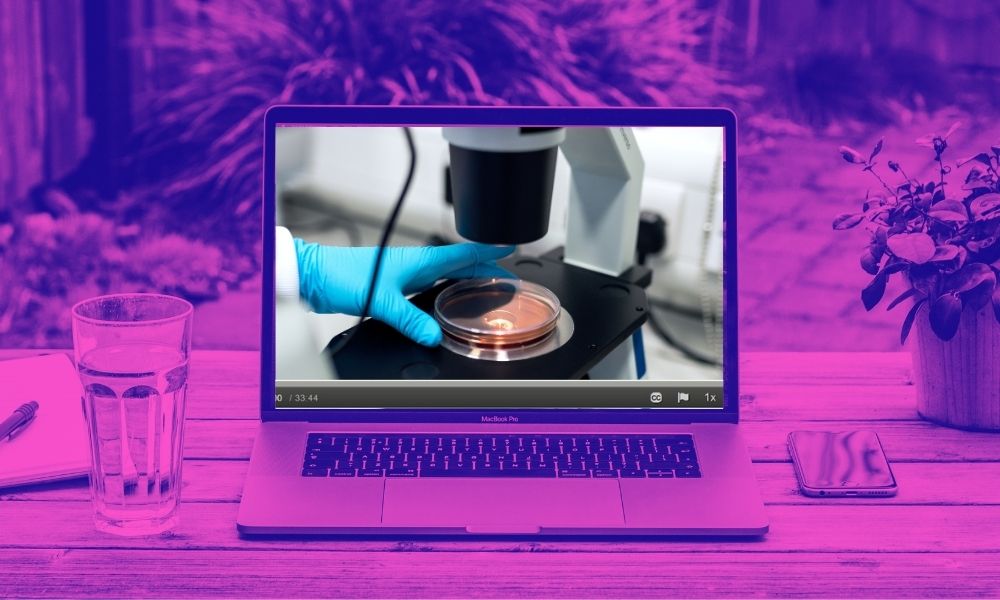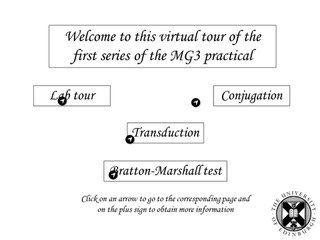
In this post, Elise Darmon a Lecturer in Molecular Bioscience Education and Heather McQueen Professor of Biology Education describe how they used online media, videos and animations to build laboratory familiarity, an understanding of the important techniques, and a sense of belonging and community in a hybrid learning and teaching environment…
A class of 140 third year molecular biology students looking for research training, a lab with capacity of 38 students (assuming no-one moves), and one short busy summer in which to get ready. This was the challenge. Oh yes, and all the unpredictability of a global pandemic.
So first we poured a large mug of coffee in our individual houses and settled down for a long Teams call; the first of many. Then we answered some basic questions about what was essential, what were the learning objectives, what material we could lose without diminishing the flow of logic from the desired set of experiments and most importantly what could students realistically expect to learn if they could never get to the lab. And how?
One thing we decided early on was that to provoke learning in this online environment, and to engage those students that were not able to attend in-person lab sessions, we would need to get students working together. Some quick arithmetic told us that the rooms and time available would allow each student on average the possibility of one trip to the lab, although some students would be located on the wrong continent or prohibited by self-isolation and would not be able to grab this opportunity. If the thinking around the experiments was, however, carried out as a communicating group then everyone could plan and interpret results produced by group representatives each week. Learning objectives were adjusted to help us to design both a learning process and learning assessments that did not rely on physical presence in the lab. Weekly group assignments were set, to help everyone in the group to understand the experiments before each weekly lab. Using Microsoft Teams, we seeded teams of 8 students and inserted a newly briefed but experienced demonstrator into each group to answer questions and provide weekly feedback.
But how to build laboratory familiarity without having the students physically in the lab? How to convey an understanding of the important techniques, how to actually do microbiology or dilutions for example, without actually performing them? How to convey an understanding of the biology background? And what about the sense of belonging and community?
In short, our answer has been to use online media, videos and animations but being cautious to avoid overload, as we learned to our cost. Our videos include our own bespoke new resources combining lab photos, HP5 animations and screen capture. Remembering not to reinvent the wheel, we also used some freely available resources from the web. In the first week of term we attempted live streaming of in-person labs to groupmates at home. However, neither students being filmed nor students watching found this experience satisfactory, preferring the more organised emergency videos that have now been lovingly prepared by our fabulous dedicated technical staff, who stepped in and mopped up when we realised our mistake.

Next we needed a structure that would facilitate clear presentation of all of these resources and communication to all of these people remotely. Luckily we had attended Michael Gallagher and colleagues’ excellent online course ‘An Edinburgh model for online teaching’ and knew about weekly folders and to-do lists that can be used to provide clear, unfolding learner journeys. From the same place, we had also learned that we needed to provide live sessions to complement the learning journey and to engage students (but not to use as stand-alone teaching). Thus our practical sandwich was born. A 6 week online journey with representatives in the lab on weeks 2-5 sandwiched between one introduction and one ‘wash-up’ live (and recorded) collaborate session. One more thing though. How to organise busy students for this complicated attendance schedule and at a time of global pandemic? Simple- by providing choice. Students who do not or cannot attend don’t. Students that are desperate to attend can, and can also sign up as reserve, and most importantly, individual groups have complete freedom to organise this between themselves (causing timetabling pandemonium but satisfied students).
So is it working? Well… its only week 5, but things seem to be fair to middling. Communication between students seems to be sometimes good but variable between groups. Scheduled weekly check-ins do take place but otherwise traffic is still thin on course discussion boards and Teams sites where staff and demonstrators are waiting to help. Perhaps it is too early for students to have fully acclimatised to the benefits of asynchronous learning. Perhaps we will only really know how well it all worked after the assessed quiz deadline, or maybe the course feedback.
Is it perfect? Definitely not. Is anyone dissatisfied? Of course. Sometimes us. What have we learned so far that might be of use to others? Probably three things.
- Hybrid learning, in our hands, presents a risk that students will judge the important learning to be either online or in-person (but not both) which raises satisfaction and engagement issues.
- If you are enthusiastic about your subject, your plans will grow too big too quickly. Keep it lean and avoid trying one thing too many- live streaming in our case.
- No matter how well considered you think your plans are, you don’t (and cannot) know how it will work until after you have actually done it.
 Elise Darmon
Elise Darmon
Elise Darmon is a Lecturer in Molecular Bioscience Education and has been enjoying teaching this practical with Heather for the last 3 years. Elise’s interest is in designing and teaching workshops to develop student active participation, confidence and learning. She is FHEA.
 Heather McQueen
Heather McQueen
Heather McQueen is Professor of Biology Education and has been teaching this practical (as well as a wide range of other teaching) for more than 15 years. Heather is passionate about active learning and has pioneered the ‘quecture’ strategy for active learning in lectures. She is SFHEA and a National Teaching Fellow.

